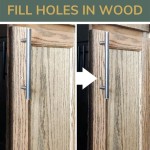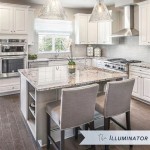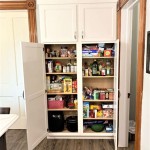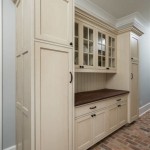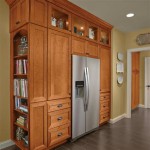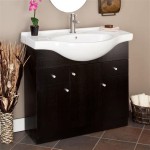Cabinet Pulls: Where To Place Them
Cabinet pulls are a functional and stylish element of kitchen and bathroom design. They provide the means to open and close cabinet doors and drawers, while also adding to the overall aesthetic of the space. The placement of cabinet pulls is crucial for both ease of use and visual appeal. This article explores the key considerations for placing cabinet pulls in your kitchen and bathroom cabinets.
Determining the Ideal Pull Placement
The ideal placement of cabinet pulls depends on a few factors, including the size and style of the cabinet, the type of pull, and personal preference. However, there are some general guidelines to follow:
Standard Placement:
For most cabinets, the standard placement for pulls is centered on the cabinet door or drawer front. This ensures that the pull is easily accessible and provides a balanced look.Pull Size and Cabinet Size:
The size of the pull should be proportionate to the size of the cabinet. For smaller cabinets, smaller pulls are typically preferred, while larger cabinets can accommodate larger pulls. The pull should not be too small or too large, as this can affect the overall aesthetics and usability.Pull Style:
Some pull styles, such as bar pulls, are best placed horizontally, while others, like cup pulls, can be placed vertically or horizontally.Placement Considerations for Different Cabinet Types
The placement of cabinet pulls can vary depending on the type of cabinet. For example, upper cabinets might have different placement considerations than lower cabinets.
Upper Cabinets
For upper cabinets, it's important to consider the height of the cabinet in relation to the user's height. The pulls should be placed at a height that is easily accessible without requiring too much stretching or reaching. This typically means placing the pulls lower on the cabinet door, closer to the bottom.
Lower Cabinets
Lower cabinets often have more space and less concern about reaching, so the pulls can be placed higher up on the cabinet door. However, it's still important to ensure that the pulls are easily accessible without requiring excessive bending or reaching.
Drawers
Drawers typically have pulls placed horizontally along the bottom edge, centered on the drawer front. This placement provides easy access to the pull while maintaining a clean and symmetrical look.
Spacing and Alignment
Consistent spacing and alignment of cabinet pulls are essential for a cohesive and visually appealing look. The spacing between pulls should be consistent throughout the kitchen or bathroom, ensuring a uniform look. Pulls should also be aligned with each other, with all pulls positioned at the same height on each cabinet or drawer.
When placing multiple pulls on a single cabinet door or drawer, it's best to choose an even number of pulls. This creates a balanced and symmetrical look, especially important when the cabinet doors or drawers are divided into sections. For example, a cabinet with two doors can have two pulls placed in the center of each door, maintaining symmetry and visual harmony.
In addition to spacing and alignment, consider the use of cabinet pull templates. These templates provide a visual guide for placement, ensuring consistent spacing and accurate alignment. Using templates can greatly simplify the installation process and ensure a professional finish.
Remember, the placement of cabinet pulls is a matter of personal preference and design style. There are no hard and fast rules, but by following these guidelines, you can create a functional and aesthetically pleasing space that reflects your unique style.

Guide For Hardware Positioning Mockett

Cabinet Hardware Placement Guide

How To Install Cabinet Handles Straight Without Losing Your Mind

The Ultimate Guide For Cabinet Hardware Placement And Sizing Kitchen Inspiration Design

Design 101 Cabinet Hardware Placement Lark Linen

Where To Place Cabinet Hardware Emtek

How To Place Cabinet Knobs Pulls

Cabinet Hardware Placement Guide Foxy Oxie
Cabinet Hardware Placement Where To Put Knobs And Handles Vevano

Hardware Guide
Related Posts

